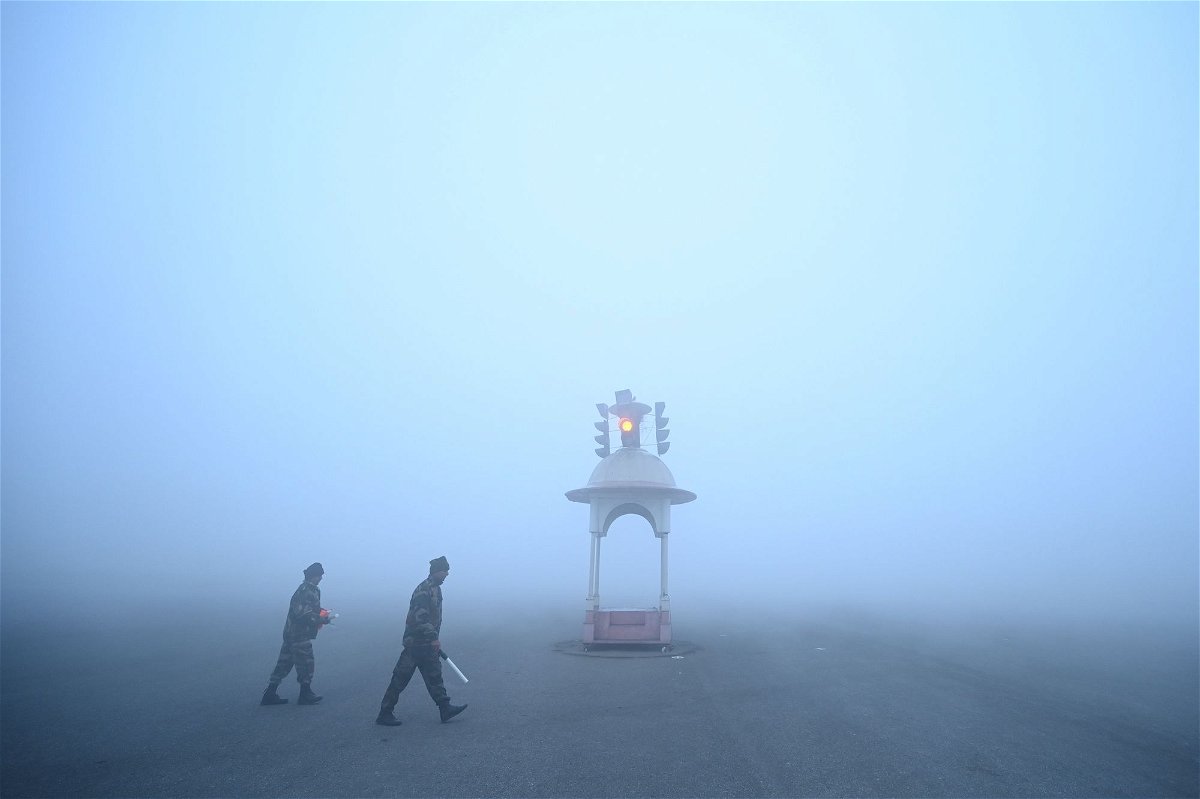Smog is choking New York. But for these cities, it’s just another day

Heavy smog and low visibility is seen here in New Delhi
By Jessie Yeung, CNN
Hong Kong (CNN) — For days, images of New York choking in smoke have stunned the United States, as residents struggle to deal with the unfamiliar challenge of severe air pollution.
The smoke, originating from wildfires in Canada, has prompted authorities to issue air quality alerts down the East Coast and people have again donned N95 face masks, largely abandoned since the pandemic. On social media, people share photos of the “apocalyptic” scene and tips to minimize health risks.
Outside of West Coast states like California that experience annual wildfires, these scenes are rare in the US.
Half the world away, however, fighting smog is nothing new. And the intense air pollution caused by noxious smoke, gases and industrial chemicals that smothers many major cities across Asia for much of the year could become the norm for many more worldwide as the climate crisis worsens.
Last year, six of the world’s 10 most polluted cities were in India, according to monitoring network IQAir. Researchers have estimated that bad air could be reducing the life expectancy of hundreds of millions of Indians by as much as nine years; in 2019, air pollution is thought to have caused nearly 1.6 million deaths in the country.
The capital New Delhi is regularly shrouded in smog, thanks to several factors including vehicle emissions, coal-fired power plants, and the annual practice of burning agricultural fields to prepare land for its next crop.
That means its people are exposed to high levels of fine particulate matter, or PM2.5, a widely used indicator of harmful air pollution. The tiny pollutant is highly dangerous; when inhaled, it can travel deep into lung tissue and enter the bloodstream, and has been linked to health problems including asthma and heart disease.
It comes from sources like the combustion of fossil fuels, dust storms – and wildfires, meaning New York is now smothered in the pollutant.
New York’s PM2.5 levels peaked Wednesday afternoon, measuring 303.3 micrograms per cubic meter. For comparison, World Health Organization guidelines recommends a limit of an average annual level of 5 micrograms per cubic meter; London measured 9.4 micrograms per cubic meter on Wednesday, and Hong Kong measured 21 micrograms per cubic meter, both safely within IQAir’s “good” range.
Many countries in Southeast Asia are also all too familiar with the disruptions to daily life that air pollution can bring, especially during the annual stubble-burning season, when farmers set fire to the straw stubble left after the harvesting of grains.
In 2019, the air got so bad in Malaysia that dozens of students fell ill and experienced vomiting, prompting more than 400 schools to close across the country.
Just a few months later, Malaysia was again covered by a dense haze that came from large-scale forest fires in nearby Indonesia, allegedly lit to clear land for the production of paper, palm oil and other industries.
More recently, Thailand’s northern city of Chiang Mai took the unenviable title of world’s most polluted city for at least a week straight in April, due to smoke from forest fires and crop burning elsewhere in the region. Massive numbers of people sought medical attention for respiratory issues including asthma and shortness of breath, with one hospital saying wards were so full they had to turn some patients away.
But perhaps the city most notorious for its pollution – and that has most successfully turned things around – is Beijing.
For years, residents in the Chinese capital breathed in acrid air every day. It culminated in the infamous 2013 “air-pocalypse,” when the air quality index hit 755, smashing what was supposed to be the top of the scale at 500, according to the US Embassy in Beijing that kept a daily air quality monitor. That historic high meant the air was beyond hazardous, forcing residents to shut themselves indoors, wear filtered face masks, and crank air purifiers on high.
The event attracted global media attention and forced the issue into China’s mainstream – and soon after, China launched a sweeping anti-pollution campaign, shutting down coal mines and coal plants, setting up nationwide air monitoring stations, and rolling out new regulations.
There are still issues – China has turned back to coal in recent years, rapidly building new power plants even as more and more countries look toward renewable energy – but the improvement in the capital is undeniable. In 2021, Beijing recorded its best monthly air quality since records began in 2013; photos now show mostly blue skies in the city.
It’s an encouraging sign, and evidence that the right policies and investment can help fix air quality. But, scientists and experts warn, there are only further challenges on the horizon – that even cities with normally good air like New York cannot escape.
Human-caused climate change has exacerbated the hot and dry conditions that allow wildfires to ignite and grow. Scientists recently reported that millions of acres scorched by wildfires in the western US and Canada – an area roughly the size of South Carolina – could be traced back to carbon pollution from the world’s largest fossil fuel and cement companies.
Canadian Prime Minister Justin Trudeau pointed to “the devastating impacts of climate change” in a statement on Wednesday, after speaking with US President Joe Biden on how to put out the Quebec fires.
The image of the United Nations building in New York, barely visible through orange smog, “is the perfect image for how world leaders have failed at stopping the climate crisis,” tweeted scientist and climate advocate Lucky Tran on Wednesday, adding in a separate post: “Today New Yorkers and East Coasters are experiencing this impact first hand.”
The-CNN-Wire
™ & © 2023 Cable News Network, Inc., a Warner Bros. Discovery Company. All rights reserved.
